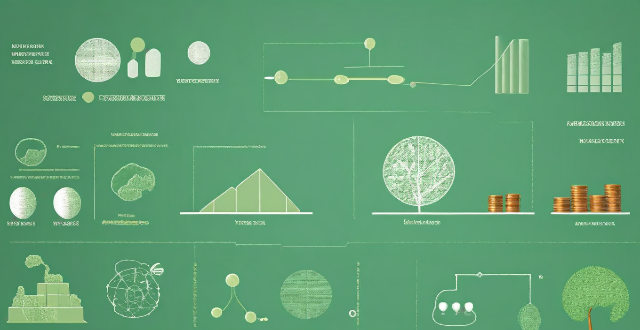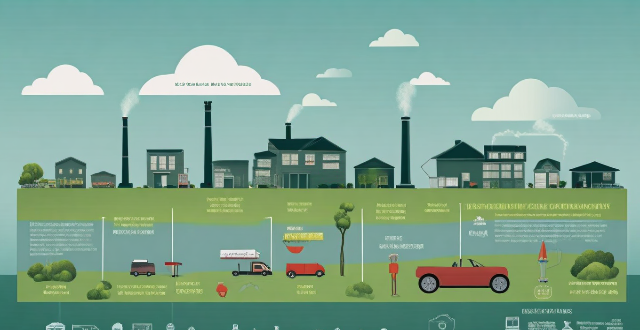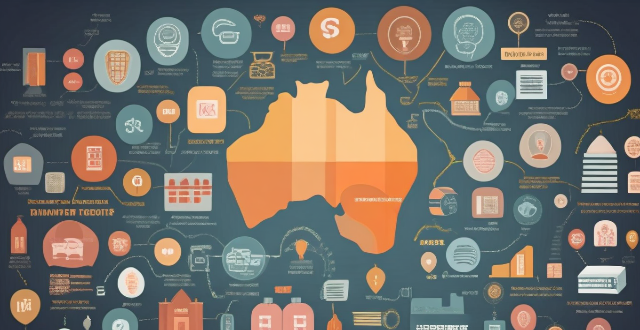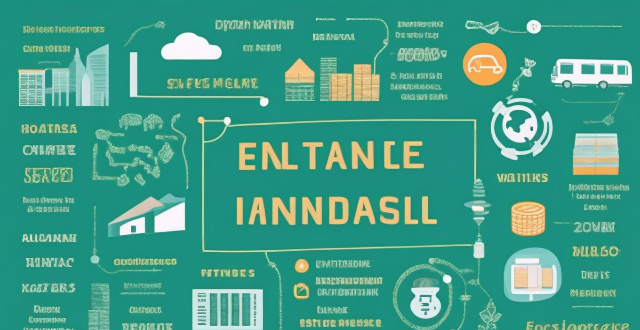Loan Finance

How do I apply for a student loan ?
This text provides a comprehensive guide on how to apply for a student loan. It outlines nine steps, including determining needs, researching loan options, checking eligibility requirements, gathering documents, completing and submitting the application form, waiting for approval, signing promissory notes and loan agreements, and receiving disbursement of loan funds. The guide emphasizes the importance of understanding different loan options and their terms and conditions before applying. It also highlights the need to gather all necessary documents and provide accurate information in the application form. Overall, this text is an essential resource for students seeking financial assistance for their education.

How do I qualify for a mortgage loan ?
This article provides a detailed guide on how to qualify for a mortgage loan, highlighting key factors that lenders consider such as income, credit score, debt-to-income ratio, employment history, and assets and liabilities. It also outlines steps to take in order to increase chances of success including checking your credit score, calculating your DTI, gathering financial documents, shopping around for lenders, getting pre-approved for a loan, finding a home within budget range, making an offer, and completing the closing process.

What factors determine the amount of a student loan ?
The amount of a student loan is determined by several key factors, including eligibility criteria set by the lender, the cost of attendance at the chosen school, the student's financial need, and the type of loan (federal or private). Other influential factors include repayment options, school choice, and the availability of other financial aid. Students should consider all these elements and explore all possible funding options before taking out a loan.

How does defaulting on a student loan affect future borrowing ?
Defaulting on a student loan can severely impact your financial future, including your ability to borrow money. Here's what happens when you default and how it affects future borrowing: 1. **Consequences of Defaulting**: When you fail to make payments on your student loan for an extended period (typically 270 days), it's declared in default. The loan servicer then takes measures like wage garnishment, tax refund offset, and charging collection fees. Your credit score also takes a significant hit. 2. **Impact on Future Borrowing**: - **Difficulty Obtaining New Loans**: Lenders see you as a high-risk borrower, making it hard to get mortgages, car loans, or personal loans. - **Higher Interest Rates**: Even if approved, you face higher interest rates due to your damaged credit score. - **Limited Borrowing Options**: You may only qualify for secured or co-signed loans. - **Trouble Renting Property**: Some landlords check credit scores, and a defaulted loan can hinder your rental applications. - **Impact on Employment Opportunities**: While less common, some employers might check your credit report, affecting job prospects in industries where financial responsibility is crucial. 3. **Recovering from Default**: - **Rehabilitation Programs**: Many lenders offer these to help you make affordable payments over time, removing the default status. - **Consolidation Loans**: You can consolidate your defaulted loan into a new Direct Consolidation Loan through the federal government, making it easier to manage your debt. However, this doesn't remove the default status from your credit report. - **Paying Off the Debt**: If possible, paying off the loan in full removes the default status and improves your borrowing prospects. Negotiating a settlement with your lender or seeking assistance from a nonprofit credit counseling agency are other options.

How can I manage my student loan repayment after graduation ?
## Summary of Managing Student Loan Repayment After Graduation After graduation, managing student loan repayment can be a significant challenge. However, by following these steps, you can effectively manage your loans and avoid unnecessary fees or damage to your credit score: 1. **Understand Your Loan Terms**: Before starting any repayment plan, it's crucial to understand the terms of your student loans, including interest rates, monthly payments, and grace periods. 2. **Create a Budget**: A budget helps prioritize expenses and determine how much money can be allocated towards student loan repayment each month. Include all necessary expenses in your budget. 3. **Make Payments On Time**: Late payments can lead to fees and negatively impact your credit score. Set up automatic payments or make manual payments on time to avoid penalties. 4. **Consider Consolidation or Refinancing**: If you have multiple loans with different terms, consolidating them into one payment or refinancing at a lower rate may simplify repayment and save money. 5. **Explore Repayment Options**: Federal student loans offer various repayment plans, such as income-driven plans that adjust your payments based on your income and family size. Discuss the best plan with your loan servicer. 6. **Seek Help if Needed**: If struggling to make payments, don't hesitate to reach out for assistance. Many loan servicers offer forbearance or deferment options, and there are also government programs that can provide support for student loan repayment.

What is decentralized finance (DeFi) and how does it work ?
Decentralized finance (DeFi) is a financial system based on blockchain technology that operates without intermediaries like banks. It is transparent, borderless, permissionless, and interoperable. The core components of DeFi are smart contracts, cryptocurrencies, decentralized applications, and blockchain infrastructure. Users can access DeFi platforms through wallets, provide collateral for loans, earn interest by depositing their cryptocurrencies into lending platforms, trade assets peer-to-peer, get insurance against risks associated with smart contracts and cryptocurrency holdings, and have voting rights within the ecosystem. However, DeFi faces challenges such as scalability issues, regulatory uncertainty, security risks, and user experience complexity. Despite these challenges, DeFi has immense potential to democratize finance and provide inclusive solutions.

Are there any programs that help with student loan forgiveness or relief ?
There are several programs available to help with student loan forgiveness or relief, including Public Service Loan Forgiveness (PSLF), Income-Driven Repayment Plans (IDRs), Teacher Loan Forgiveness Program, Disability Discharge, Closed School Discharge, and Borrower Defense to Repayment. These programs vary by country and eligibility requirements, but they all aim to make student loan payments more affordable or forgivable based on certain criteria such as employment in public service, income level, teaching at a low-income school, disability status, school closure, or being misled or defrauded by a college or university. It's important to research each option thoroughly and determine which one best fits your individual circumstances and needs.

What should I consider when choosing a private vs federal student loan ?
When choosing between a private and federal student loan, consider interest rates, repayment options, forgiveness programs, eligibility requirements, and the application process. Federal loans usually have lower interest rates and more lenient eligibility requirements, while private loans may offer more flexibility in repayment options but typically have higher interest rates. Weigh these factors against your individual circumstances and financial goals to make an informed decision about which type of loan is best for you.

What is green finance ?
Green finance is the use of financial instruments and strategies to support environmentally friendly projects. It includes sustainable investing, green bonds, green banks, carbon credits, impact investing, climate-related disclosures, ESG criteria, green indexes, green funds, green insurance, green tax incentives, green microfinance, green real estate, green technology, and green partnerships. The goal of green finance is to promote economic growth while minimizing negative impacts on the environment.

How secure is decentralized finance compared to traditional finance ?
The text provides a comparative analysis of the security aspects of decentralized finance (DeFi) and traditional finance (TradFi). DeFi relies on blockchain technology for peer-to-peer transactions, while TradFi operates through centralized institutions. Both systems have unique security features and risks, with DeFi offering transparency and automated contract execution but facing smart contract vulnerabilities and lack of regulatory clarity. TradFi benefits from regulatory oversight and physical security measures but is susceptible to systemic risks and cybersecurity threats. The choice between DeFi and TradFi depends on individual preferences and risk tolerance, and it's crucial to stay informed about new developments in the evolving financial landscape.

What are the risks associated with green finance investments ?
The article discusses the various risks associated with green finance investments, including market risk, credit risk, operational risk, environmental risk, reputational risk, and legal and regulatory risk. It emphasizes the importance of understanding these risks before making investment decisions in order to achieve desired levels of risk and return.

What are the ethical considerations in the allocation and use of climate finance ?
The article discusses the key ethical considerations that must be addressed in the allocation and use of climate finance to ensure its effectiveness and equity. These considerations include transparency, accountability, equity, justice, sustainability, long-term goals, inclusivity, participation, innovation, and learning. By prioritizing these factors, climate finance can contribute more effectively to global efforts to tackle climate change and create a more just and resilient world for current and future generations.

What are the benefits of investing in green finance ?
The text discusses the benefits of investing in green finance, which supports environmentally friendly projects. It highlights three main categories of benefits: environmental, economic, and social. Environmental benefits include reducing carbon emissions, conserving natural resources, and protecting biodiversity. Economic benefits encompass job creation, innovation stimulation, and reduced energy costs. Social benefits involve improving public health, promoting social equity, and enhancing the quality of life. The article emphasizes that investing in green finance contributes to sustainable development and a better future for all.

What is the status of climate finance commitments made during climate change negotiations ?
This text discusses the status of climate finance commitments made during climate change negotiations, highlighting their importance in mitigating and adapting to climate change. It outlines key points regarding financial commitments, progress towards targets, channels for finance, and the need for improved monitoring and reporting mechanisms. The text also explores the involvement of both the public and private sectors in climate finance, as well as the challenges and opportunities that exist in this area. Finally, it emphasizes the significance of increasing transparency, improving accountability, and exploring innovative financing solutions to ensure that these commitments result in meaningful actions to address climate change.

What are the benefits of using decentralized finance ?
Decentralized finance (DeFi) is a sector within the cryptocurrency space that aims to create an open-source, permission-less, and transparent financial service ecosystem using blockchain technology. It offers several benefits over traditional financial systems, including increased accessibility, lower costs, greater transparency, enhanced security, programmable money, improved efficiency, and financial inclusion. By eliminating intermediaries and reducing overhead costs, DeFi makes financial services more affordable and accessible to a wider audience. Its transparent ledger system reduces fraud and increases trust among participants, while its secure blockchain networks protect user funds. DeFi also enables programmable money, allowing for customized financial products and services, and improves efficiency by streamlining transaction processing. Ultimately, DeFi has the potential to revolutionize finance by democratizing access to essential financial services for underbanked populations and bridging the gap between developed and developing countries in terms of financial access.

In what ways does financial literacy affect personal finance management ?
Financial literacy is crucial for managing personal finances effectively, as it helps individuals understand basic financial concepts, promotes prudent budgeting and spending habits, shapes savvy saving and investing strategies, and facilitates efficient debt management.

How effective are microfinance programs in improving the economic status of women in developing countries ?
Microfinance programs aim to alleviate poverty, especiallyMicrofinance programs aim to alleviate poverty, especially, by offering small loans and especially among women in developing countries, by offering small loans and savings opportunities. These initiatives can lead to increased entrepreneurship, economic empowerment, and community development. However, their effectiveness varies due to factors like high interest rates and market saturation. To maximize impact, best practices include tailored loan products, capacity building, sustainable development, and partnership with governments and NGOs.

What are the key challenges facing the growth of green finance ?
Green finance is facing several key challenges, including lackGreen finance is facing several key challenges, including lack data availability, inadequ there needs to be greater harmonization and standardization of definitions and reporting requirements for green finance, increased efforts to collect and share data on environmental impacts and risks, stronger regulatory frameworks that encourage transparency and accountability, greater education and outreach efforts aimed at increasing awareness and understanding of green finance among investors, and greater emphasis on highlighting the potential economic benefits of green finance.

What is the relationship between climate finance and disaster risk reduction ?
Climate finance and disaster risk reduction are interconnected concepts that address the impacts of climate change. Climate finance provides funding for projects aimed at reducing greenhouse gas emissions and adapting to climate change, while disaster risk reduction involves strategies to minimize the potential impacts of natural disasters on communities and infrastructure. The relationship between the two lies in their shared goal of addressing climate change, with climate finance supporting disaster risk reduction through funding for adaptation measures, investments in vulnerable communities, promoting sustainable development, encouraging innovation, and strengthening institutional capacity.

What innovations in financial instruments are being used to mobilize climate finance ?
Innovations in financial instruments for mobilizing climate finance include green bonds, climate derivatives, sustainable investment funds, impact investment funds, and microfinance for climate action. These tools aim to support projects that reduce greenhouse gas emissions, adapt to climate change, and promote sustainable development while offering investors potential returns and risk management options.

What role does technology play in modern finance and banking ?
Technology has revolutionized the finance and banking industry by enhancing efficiency, improving customer experience, and driving innovation. Automation, streamlined processes, and cost reduction have made financial services more efficient. Personalization, accessibility, and advanced cybersecurity measures have improved customer experiences. Fintech startups, blockchain technology, and cryptocurrencies are driving innovation in the industry. As technology continues to evolve, it will play an even greater role in shaping the future of finance and banking.

How does Fintech influence the job market in the finance industry ?
The influence of fintech on the job market in the finance industry has led to the creation of new roles and changes in the skillset required for existing positions. Fintech companies have increased demand for software developers, data scientists, and cybersecurity experts. Additionally, specialized financial roles like fintech startup founders, regulatory compliance officers, and customer experience managers have emerged. Traditional finance roles such as bankers, accountants, and investment advisors now require proficiency in digital tools and an understanding of automation and data analytics. As technology continues to advance, the finance industry workforce will need to adapt continuously to stay relevant in the changing job market.

How can climate finance be integrated with national development plans and strategies ?
Integrating Climate Finance with National Development Plans and Strategies emphasizes the importance of aligning climate finance with national priorities, ensuring policy coherence, participatory planning, resource mobilization, risk management, monitoring and evaluation, capacity building, transparency and accountability. Key implementation steps include assessment and diagnosis, formulation of integrated strategies, financing mechanisms, implementation and disbursement, and reporting and learning. By integrating climate finance, countries can address climate change while promoting sustained economic growth and social well-being.

What is green finance and how does it relate to climate change ?
Green finance is the financing of projects that have environmentally friendly impacts, such as reducing carbon emissions or conserving natural resources. It involves investing in renewable energy sources, clean technologies, and sustainable infrastructure projects that aim to mitigate climate change and promote a greener economy. The relationship between green finance and climate change includes impact on carbon emissions, promotion of sustainable practices, innovation and technology development, risk management and resilience, market incentives and policy support, stakeholder engagement, and international cooperation. Green finance plays a crucial role in addressing climate change by directing capital towards environmentally beneficial projects and practices.

How can green finance be integrated into mainstream financial markets and products ?
Green finance is the integration of environmental considerations into financial decision-making processes. It involves using financial mechanisms to support sustainable development and promote environmentally friendly investments. Integrating green finance into mainstream financial markets and products is crucial for addressing climate change and promoting sustainable economic growth. This response discusses various ways in which green finance can be integrated into mainstream financial markets and products, including promoting green bonds, stocks, mutual funds, ETFs, and banking products; establishing supportive regulations; and raising awareness about sustainable investments.

What are some effective personal finance management strategies ?
Managing personal finances effectively is crucial for achieving financial stability and long-term success. Here are some effective personal finance management strategies: 1. Create a budget that tracks income, expenses, savings, and adjustments. 2. Build an emergency fund with at least 3-6 months' worth of living expenses in a high-yield savings account or money market fund. 3. Pay off high-interest debt using the snowball or avalanche method. 4. Invest for long-term goals by starting early, diversifying, and staying consistent. 5. Protect your finances with health insurance, disability insurance, and life insurance. 6. Plan for retirement by starting early, maximizing contributions, and investing wisely. 7. Educate yourself through reading books, taking courses, and seeking professional advice.

How can climate finance be leveraged to support renewable energy projects ?
Climate finance plays a crucial role in supporting renewable energy projects. Here are some ways to leverage it: 1. Public-Private Partnerships (PPPs) can be used to attract private investment into renewable energy projects. 2. Green Bonds can be issued to fund environmentally friendly projects such as solar and wind farms. 3. Carbon Pricing Mechanisms can generate revenue that can be invested in renewable energy projects. 4. International Climate Finance Initiatives can provide funding for renewable energy projects in developing countries. 5. Crowdfunding Platforms offer another way to raise funds for renewable energy projects. By using a combination of these strategies, we can accelerate the transition towards a more sustainable future.

How effective has international climate finance been in reducing greenhouse gas emissions ?
The text discusses the effectiveness of international climate finance in reducing greenhouse gas emissions. It states that such a financial mechanism is vital for supporting developing countries to reduce their GHG emissions and adapt to climate change impacts, but it falls short of global climate action needs. The key points include the total funds committed and disbursed, allocation across sectors and regions, direct and indirect emission reductions achieved, and challenges related to funding adequacy, allocation, and monitoring. The conclusion emphasizes the importance of addressing these challenges to enhance the effectiveness of international climate finance in the future.

How can climate finance be made more equitable and accessible to vulnerable communities ?
Climate finance plays a crucial role in addressing the challenges posed by climate change. However, ensuring that this finance is equitable and accessible to vulnerable communities requires a multi-faceted approach. Here are some strategies that can be employed: 1. Prioritize Vulnerable Communities: Identify and target vulnerable communities, allocate adequate resources, develop targeted programs and initiatives that address their needs. 2. Enhance Capacity Building: Provide training and education on climate change mitigation and adaptation strategies tailored to the needs of vulnerable communities, build institutional capacity, strengthen partnerships between governments, civil society organizations, and community groups to ensure coordinated efforts in capacity building. 3. Promote Participatory Approaches: Encourage community participation in the design, implementation, and monitoring of climate finance projects, enhance transparency and accountability, hold stakeholders accountable for meeting agreed-upon targets and milestones related to climate finance distribution and utilization. 4. Leverage Technology and Innovation: Utilize digital platforms where vulnerable communities can access information about available climate finance opportunities and apply for funding, use mobile technology to reach remote areas and provide real-time updates on project progress and outcomes, encourage innovative solutions that address the unique challenges faced by vulnerable communities, support research and development initiatives focused on creating new tools and methodologies for improving climate finance accessibility and equity. 5. Collaborate with Stakeholders: Engage with private sector entities to leverage their resources and expertise in delivering climate finance solutions to vulnerable communities, establish public-private partnerships aimed at increasing investment in sustainable projects benefiting these communities, partner with international organizations like the World Bank or UN agencies to secure additional funding and technical support for climate finance initiatives targeting vulnerable communities, harness the expertise of international NGOs working in similar fields to share best practices and lessons learned from successful projects globally.

Is decentralized finance regulated by governments or financial institutions ?
The regulation of decentralized finance (DeFi) is a complex issue that involves both government and financial institutions. Governments can regulate DeFi indirectly through tax laws and anti-money laundering/know your customer (AML/KYC) laws, while also taking enforcement actions such as investigations, sanctions, and fines. Financial institutions may engage in self-regulation by establishing industry standards and best practices, building bridges with traditional finance, and offering insurance products tailored for DeFi risks. As the DeFi ecosystem continues to grow, it is likely that both government and financial institution regulation will continue to evolve.